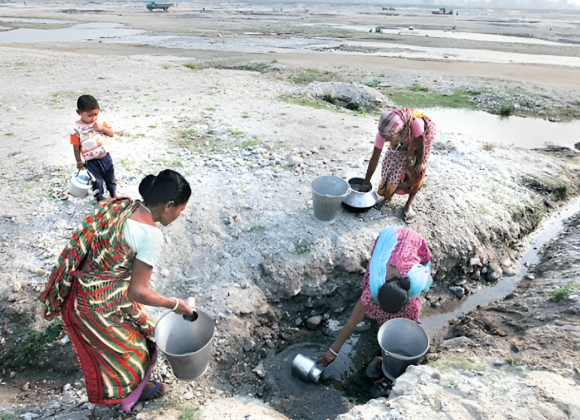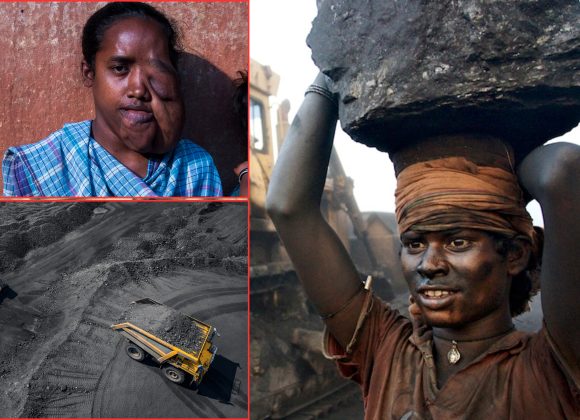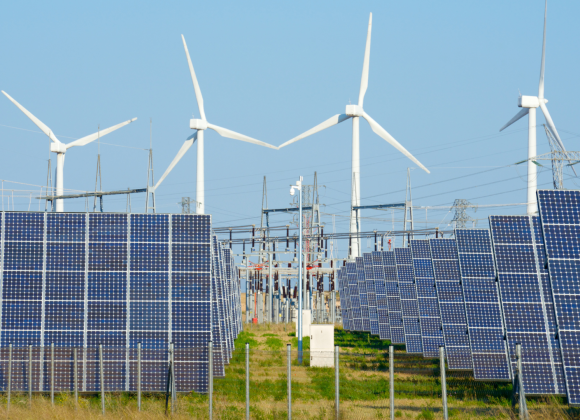Climate change has emerged as one of the most pressing global challenges of the 21st century, with far-reaching consequences on ecosystems, economies, and human health. Among its most immediate and visible effects is the rise in global temperatures, leading to more frequent and intense heatwaves. India, with its vast and diverse geography, dense population, and reliance on climate-sensitive sectors like agriculture, is particularly vulnerable to this phenomenon. In recent years, the country has witnessed a disturbing rise in extreme heat events, breaking temperature records and endangering lives across urban and rural areas alike. These heatwaves are not only a matter of discomfort—they represent a serious threat to public health, food security, water resources, and economic stability. Understanding the causes, consequences, and responses to rising temperatures in India is essential for developing strategies to build resilience and safeguard the nation’s future.
India’s Heatwave Reality: Data, Trends, and Warnings
India has been experiencing a consistent rise in average temperatures over the past few decades, and scientific data confirms that this trend is accelerating. According to the India Meteorological Department (IMD), the country’s average temperature increased by approximately 0.7°C between 1901 and 2018 [1], with more noticeable warming observed in recent years. While this number may seem small, even a marginal rise in average temperature can lead to significant climatic changes and extreme weather events.
In 2022 and 2023, India recorded some of the hottest pre-monsoon temperatures in over a century, with many northern and central regions facing temperatures above 45°C for consecutive days. Cities like Delhi, Nagpur, and Jaipur reported temperatures crossing 49°C, placing millions at risk. Notably, March 2022 was the hottest in 122 years, as per IMD records.
Moreover, the frequency, duration, and intensity of heatwaves have been increasing. For example, between 2010 and 2020, India experienced more heatwaves than in the previous three decades combined. Climate scientists from the Intergovernmental Panel on Climate Change (IPCC) [2] also project that heatwaves in India will become more severe and frequent if global temperatures continue to rise.
Another concerning trend is the emergence of “urban heat islands”, especially in densely populated metropolitan areas. These zones absorb and retain more heat due to concrete infrastructure, lack of greenery, and vehicular emissions, making urban populations especially vulnerable during heatwaves.
This mounting evidence underscores the fact that rising temperatures are not just a future possibility—they are an ongoing crisis in India, demanding immediate scientific, policy, and community responses.
Causes of Rising Temperatures
The steady rise in temperatures across India is the result of both local and global factors. A major cause is the increase in greenhouse gas emissions due to fossil fuel use, industrial activities, and a growing number of vehicles. These emissions trap heat in the atmosphere, contributing to the overall warming trend. Rapid urbanization has replaced natural landscapes with concrete and asphalt, leading to urban heat islands where cities become significantly hotter than surrounding areas. Deforestation further intensifies warming by reducing tree cover, which plays a key role in cooling the environment. Agricultural practices such as stubble burning and the use of chemical fertilizers also contribute to the emission of heat-trapping gases. Additionally, India is affected by global climate change patterns, including the melting of glaciers and changes in monsoon behavior, which further drive temperature increases. These combined factors are making India more vulnerable to extreme heat events and long-term climate risks.
1. Health Impacts
- Prolonged exposure to extreme heat can lead to heat cramps, dehydration, heat exhaustion, and life-threatening heatstrokes.
- Vulnerable groups such as the elderly, children, pregnant women, and outdoor workers are at greater risk.
- India has recorded a rise in heat-related illnesses and deaths in recent years, especially during intense summer periods.
2. Agricultural Losses
- High temperatures damage crops, reduce yield, and affect food security.
- Soil moisture loss and drought-like conditions can delay sowing seasons and reduce harvests.
- Heat stress negatively affects livestock health and productivity.
3. Water Scarcity
- Heatwaves often coincide with lower rainfall and rapid evaporation, worsening water shortages.
- Groundwater levels drop, affecting irrigation, drinking water supply, and sanitation.
4. Environmental Stress
- Extreme heat can lead to wildfires, loss of biodiversity, and ecosystem imbalance in affected regions.
- Heatwaves also accelerate glacier melting in the Himalayas, affecting river systems downstream.
Government Response and Mitigation Efforts
The Indian government has taken several steps to address the rising threat of extreme heat. Key measures include Heat Action Plans in multiple states, early warning systems by the India Meteorological Department, and public awareness campaigns to reduce health risks. Urban planning now emphasizes green spaces and heat-resilient infrastructure, while the promotion of renewable energy aims to reduce greenhouse gas emissions. Public health systems are being strengthened through training and the setup of cooling centers in vulnerable areas. Water conservation projects and the National Action Plan on Climate Change also support long-term resilience. Together, these efforts reflect a growing commitment to adapt to and mitigate the impacts of climate change.
Role of Public Awareness and Preparedness
Public awareness and community preparedness play a critical role in reducing the health and social impacts of extreme heat in India. Awareness campaigns educate people about the risks of heatwaves, symptoms of heat-related illnesses, and simple preventive measures like staying hydrated, avoiding outdoor activities during peak hours, and using cooling methods.
Government agencies, in collaboration with NGOs and local bodies, conduct outreach through television, radio, social media, and public announcements. Materials are often translated into regional languages to reach diverse populations. Special efforts are made to inform vulnerable groups such as outdoor workers, children, the elderly, and people with chronic illnesses.
Preparedness is further enhanced through school programs, workplace guidelines, and community engagement initiatives that promote safe practices. Dissemination of early warning alerts via SMS and local media allows people to take timely action. These measures, when combined with infrastructural and policy interventions, significantly strengthen resilience against heatwaves and help save lives.
The Way Forward
To tackle rising temperatures, India must expand Heat Action Plans, strengthen early warning systems, and build climate-resilient infrastructure. Public awareness should be increased, especially for vulnerable groups. Investing in green spaces, renewable energy, and sustainable practices will be key. A coordinated, long-term strategy is essential to protect both people and the environment from the growing impact of extreme heat.




